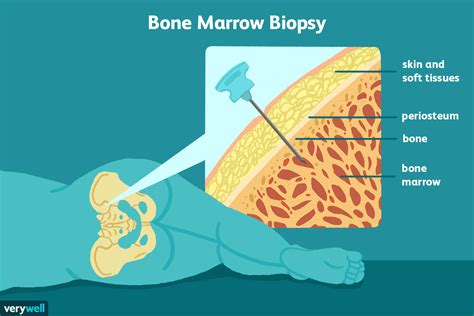Intro
Discover 5 essential tips for a successful bone biopsy, including preparation, procedure, and recovery, to ensure accurate diagnosis and effective treatment of bone-related disorders and diseases, such as osteoporosis and cancer.
Bone biopsy is a medical procedure that involves removing a small sample of bone tissue for examination under a microscope. This diagnostic tool is crucial for identifying various bone-related conditions, such as cancer, infections, and bone diseases. The procedure can be performed using different methods, including needle biopsy, open biopsy, and bone marrow biopsy. Understanding the process and preparing for a bone biopsy can help alleviate anxiety and ensure a smooth experience.
In recent years, advancements in medical technology have improved the accuracy and efficiency of bone biopsies. For instance, the use of imaging techniques like CT scans and MRI has enhanced the precision of biopsy needle placement, reducing the risk of complications. Moreover, the development of minimally invasive procedures has led to faster recovery times and reduced scarring. As research continues to uncover the complexities of bone health, the importance of bone biopsies in diagnosing and treating bone-related conditions cannot be overstated.
The significance of bone biopsies extends beyond diagnosis, as they also play a critical role in monitoring the effectiveness of treatments and tracking the progression of diseases. By analyzing bone tissue, healthcare professionals can gain valuable insights into the underlying causes of symptoms, enabling them to develop targeted treatment plans. Furthermore, bone biopsies can help identify potential complications early on, allowing for prompt intervention and preventing long-term damage. As the demand for accurate and reliable diagnostic tools continues to grow, the role of bone biopsies in modern medicine is likely to expand.
Understanding Bone Biopsy

Types of Bone Biopsy
There are several types of bone biopsies, each with its own unique characteristics and applications. Needle biopsy is a minimally invasive procedure that involves using a hollow needle to remove a small sample of bone tissue. Open biopsy, on the other hand, is a more invasive procedure that involves making an incision in the skin to access the bone tissue. Bone marrow biopsy is a specialized procedure that involves removing a sample of bone marrow, which is the spongy tissue inside the bones that produces blood cells.Preparing for a Bone Biopsy

What to Expect During the Procedure
During the procedure, the patient will be positioned on an examination table, and the area where the biopsy will be taken will be cleaned and disinfected. The doctor will then use a needle or other instrument to remove a small sample of bone tissue. The patient may feel some discomfort or pressure during the procedure, but this is usually mild and temporary. After the procedure, the patient will be taken to a recovery room where they will be monitored for any complications.Benefits of Bone Biopsy

Common Applications of Bone Biopsy
Bone biopsy has a range of applications, including diagnosing bone cancer, monitoring the progression of bone diseases, and evaluating the effectiveness of treatments. The procedure can also be used to diagnose infections, such as osteomyelitis, and to monitor the healing of bone fractures. In some cases, bone biopsy may be used to diagnose conditions such as osteoporosis or Paget's disease.Risks and Complications of Bone Biopsy

Minimizing Risks and Complications
To minimize the risks and complications associated with bone biopsy, patients should follow their doctor's instructions carefully. This includes avoiding heavy lifting or strenuous activity after the procedure and taking any prescribed medications as directed. Patients should also monitor their wound for signs of infection, such as redness, swelling, or increased pain.Recovery and Aftercare

Follow-up Care
Follow-up care is an essential part of the bone biopsy process. Patients will typically need to return to their doctor for a follow-up appointment to discuss the results of the biopsy and to remove any stitches or sutures. Patients should also follow their doctor's instructions for managing any symptoms or side effects, such as pain or bruising.FAQs

What is a bone biopsy?
+A bone biopsy is a medical procedure that involves removing a small sample of bone tissue for examination under a microscope.
What are the benefits of a bone biopsy?
+The benefits of a bone biopsy include accurate diagnosis, monitoring of disease progression, and evaluation of treatment effectiveness.
What are the risks and complications of a bone biopsy?
+The risks and complications of a bone biopsy include bleeding, infection, and nerve damage. In rare cases, the procedure may cause a fracture or other injury to the surrounding tissue.
In
